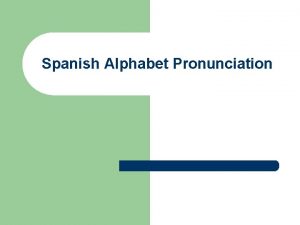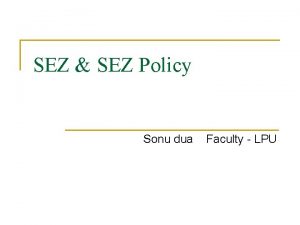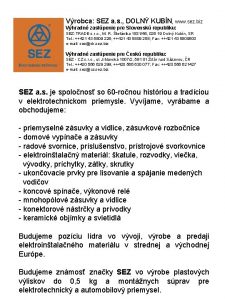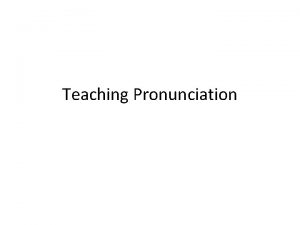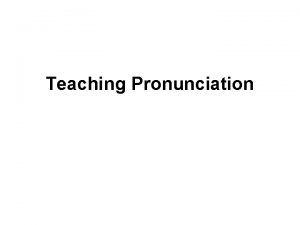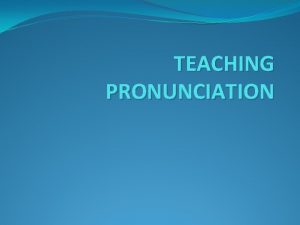Teaching Pronunciation Fernando Trujillo Sez What is Pronunciation












- Slides: 12

Teaching Pronunciation Fernando Trujillo Sáez

What is Pronunciation? • The Production of Significant Sound. – Significant because • it is used as part of a code of a particular language • it is used to achieve meaning in contexts of use. • Auditory Phonetics = The perception of the sound. • Articulatory Phonetics = The production of the sound.

Is there a correct pronunciation? • “insisting on “correct” pronunciation may not always be desirable. And it may not be feasible, either. ” (8) • “The relevant question to ask is not: what is correct in relation to a native-speaker norm (RP or otherwise), but: what is appropriate and necessary to be able to communicate in specific situations? ”(12) • “The task of pronunciation teaching, as in the teaching of any other aspect of language, is to establish models for guidance, not norms for imitation. ” (6) – Dalton, Christiane & Barbara Seidlhofer Pronunciation. Oxford University Press. (1994):

Selection • Size of unit – Sound segments – Prosodic units • Focus of attention – L 1 interference – L 2 communicative value: frequency and functional importance.

Presentation • Exposure Procedures: – Communicative tasks with no explicit teaching of pronunciation. • Exercise Procedures: – Identification of sound features. – Practice in perception and production. • Explanation Procedures: – Sensitizing and Awareness-raising activities about phonetic and phonological facts.

Teachability and Learnability • There is an inverse relationship between communicative importance and teachability. • Sound segments = [+easy to teach, - communicatively important] • Intonation = [-easy to teach, + communicatively important]

Sounds • Ear training and Awareness building – Before learners can be asked to produce the sounds of a new language, they need to learn to perceive them. – So, one of the first objectives of PT is to help learners perceive the differences between the significant sounds of English. – Important: We tend to hear the sounds of a new language through the filter of our first language.

Sounds • Communicating vs. Noticing – Foreign Language Learning = • Comprehensible input + Comprehensible output ( + Language Awareness) – The need of reconciling a narrow focus on sounds with the communicative objectives of learner involvement and meaningful interaction.

Sounds • Innocence vs. Sophistication – The younger the learners, the more able they are to learn pronunciation by mimicry. – The older the learners, the more sophisticated the instruction that can be used (and the higher the standard of achievement per hour of instruction).

Intonation • Paradox: – A decisive element for communication but – A continuous problem for pronunciation teaching. • Topics: – Prominence: a combination of loudness, length, paralinguistic features and, above all, pitch movement. – New and Given information (fall-rise for given info & fall for new info). – Floor (high for keeping it and low for yielding it). • Subliminal activities: Sensitizing and Awarenessraising.

Stress • Two aspects: – Word-stress patterns = important for intelligibility. – Prominence = important for communication. • Procedures: – The impossibility of providing rules. – The contrast between stressed and unstressed syllables (foregrounding and backgrounding).

Connected Speech • Three processes of connected speech: – Assimilation: the changes of a sound provoked by the surrounding sounds. – Elision: The leaving out of a sound or sounds in speech. – Linking: the insertion of a sound in order to make a smooth transition from one sound to another. • Modelling and mimicry.












